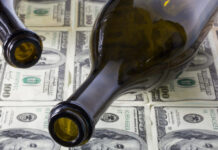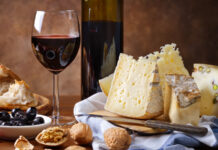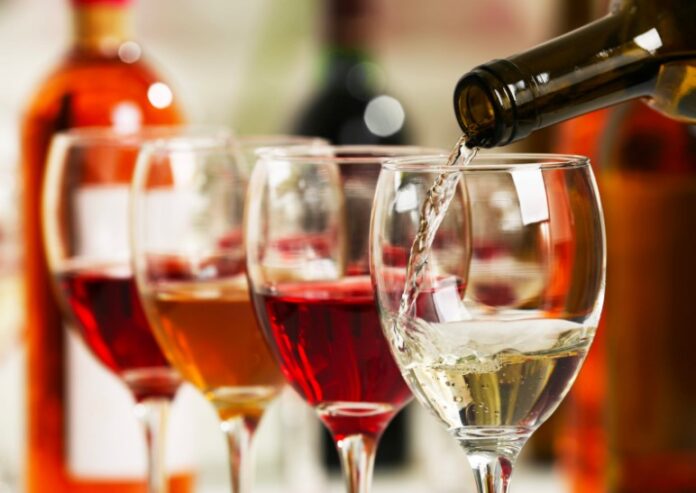
Wine is defined as an alcoholic beverage produced from fermented grapes. It can be made from other fruits, although grapes are by far the most common. The wine possesses the following characteristics:
- Sweetness – The sweetness of the wine refers to the level of residual sugar left in the wine following its production.
- Acidity – The acidity of wine gives a wine its sharpness of taste. It can also pertain to the tingling sensation on the sides of your tongue.
- Tannin – Tannin is responsible for adding balance, structure, and longevity to a wine. You can quickly tell if a wine has high tannin if it leaves a dry feeling in your mouth.
- Alcohol – The levels of alcohol affect wine’s character, body, and classification. The average wine contains 11%-13% alcohol by volume (ABV), but some wines contain much less alcohol content.
- Body – Many factors influence the body of a wine. These factors include variety and vintage, alcohol level, and region of the wine. As a rough rule of thumb, if the taste of wine lingers in your mouth for more than 30 seconds, then it means that the wine is full-bodied.
History of Wine
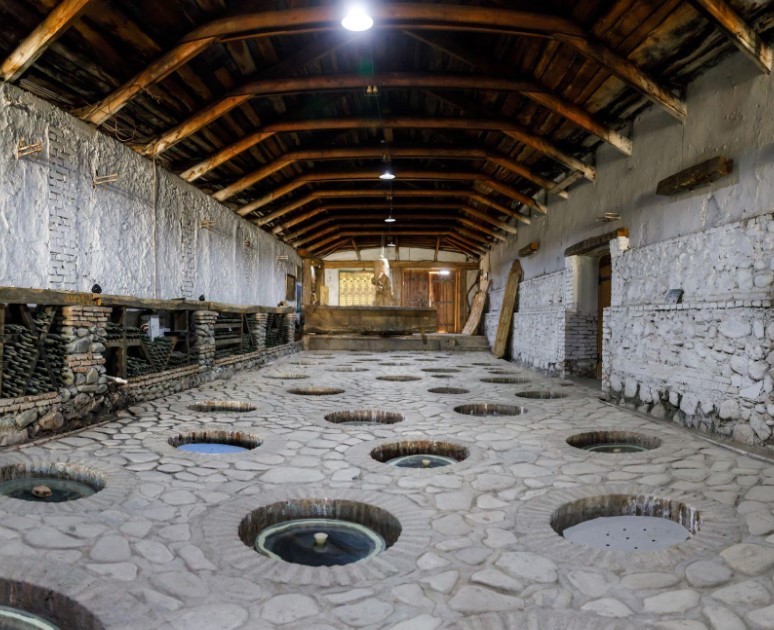
The origins of wine can be traced back to 7,000– 6600 BC in the Yellow River Valley of China’s Henan province. The ancient tribes of Jihu made rice/honey/fruit wine, and they would also store it inside earthenware jars. In Israel, Georgia, Armenia, and Iran, winemaking facilities were in existence as early as 4,000 BC. The early winemaking practices in these regions used earthenware vessels and submerged them on the ground. Georgia’s winemaking practices with earthenware vessels continue today and are now known as Kveri.
In ancient Greece and Rome, conversely, clay amphorae were used to store and transport wine. In 200 BC, eventually, Roman soldiers would be encouraged to drink 2-3 liters of wine for good health.
In 1857, the Buena Vista Winery was founded in California, and it would become the first commercial winery operation. Five years later, chemist Louis Pasteur discovered the harmful effects of oxygen on wine. This resulted in the industry storing wine in glass bottles. In 1978, the novel 100-point wine rating system was introduced by Robert Parker through The Wine Advocate, a consumer newsletter using the system. By 2013, China had become the largest consumer of dry red wine worldwide.
Why do you drink wine?

There are several reasons why you should and can drink mine. These reasons include:
- Special occasions – People take alcohol to celebrate their happy occasions such as office celebrations, birthdays, anniversaries, and weddings.
- Health benefits of wine – Wine provides antioxidants, may promote longevity, and can help protect against heart disease and harmful inflammation. Note: red wine has higher levels of antioxidants compared to white wine.
What are the basic types of wine?
Here are 5 basic types of wine. These are:
1. Sparkling Wine
Sparkling wine is a wine with a significant level of carbon dioxide. The high levels of carbon dioxide in the wine results in its fizziness.
2. White Wine
White wine is a wine that is produced without any skin contact; its standard colors range from straw-yellow, yellow-green, or yellow-gold.
Light-bodied White Wine
Light-bodied White Wine pairs well with seafood. It also contains 12.5% alcohol or less.
Full-bodied White Wine
These types of wine tend to contain 13.5% of alcohol or more and have more complex flavors. The best mesh well alongside rich, buttery foods, like lobster, smoky flavors, and pungent cheeses.
Aromatic White Wine
These wines are defined by their smell. Their aroma is caused by dominant floral aromas caused by a special aroma compound found naturally in grapes.
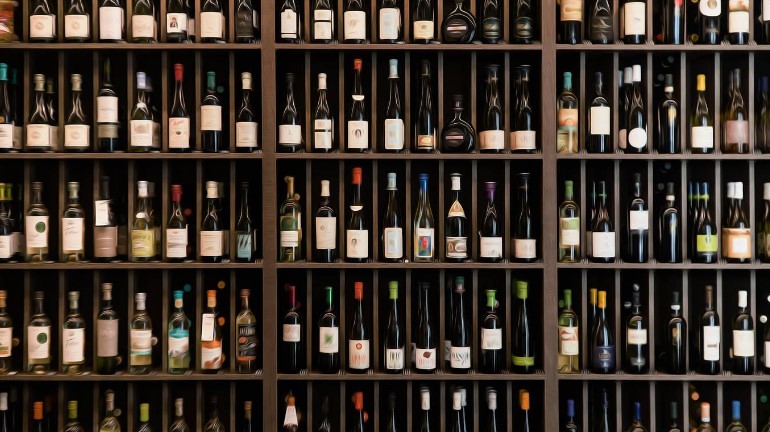
3. Rose Wine
Rose wine is produced from a blend. It has also become quite a mainstay on social media and parties. Rose wine takes its blush color from skin contact.
4. Red Wine
Red wine is produced by fermenting the juice of dark-skinned grapes. Red wine is characterized by its deep red color and its signature tannin.
Light-bodied Red Wine
Light-bodied red wine contains 12.5 percent alcohol or less. Light-bodied red wines also contain less tannin.
Medium-bodied Red Wine
Medium-bodied red wines have dominant red fruit flavors, medium to a high level of acidity, and medium tannin.
Full-bodied Red Wine
Full-bodied red wine contains 13.5% (and more) alcohol. These types of wines have more complex flavors and a richer mouthfeel.
5. Dessert Wine
Dessert wines are also known as pudding wines in the United Kingdom. Dessert wines have many types and are classified according to their sweetness level and taste. Dessert wines are known for being sweet and pair well with delectable confections.
How do you drink wine?
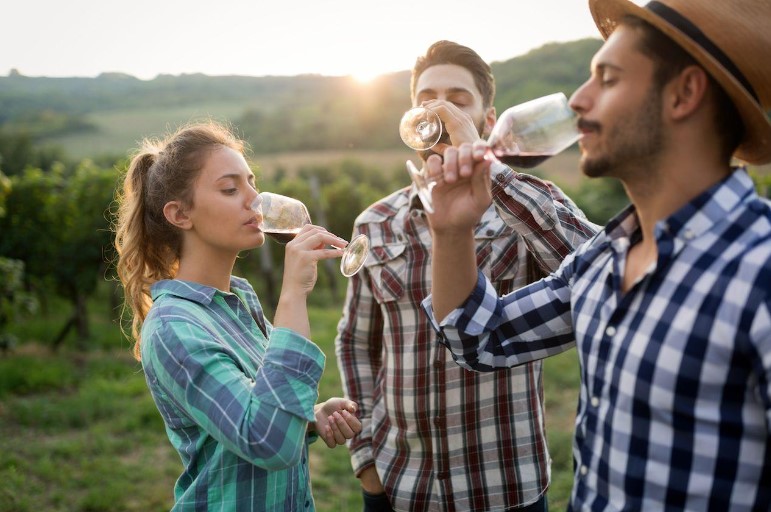
You drink wine by following these steps:
- First, you must study the label of your wine.
- Pick proper glassware for your wine, as the type of glassware can affect its taste.
- After picking the right glassware for your wine, you must hold the glass appropriately.
- Next, pour and swirl the wine inside your glass gently. Swirling the wine can intensify its aroma, especially red wine. Do remember to leave space in the glass for the aroma.
- Sniff the wine. The aroma depends on the wine and its complexity. Red wine, in particular, has a unique scent. More complex wines have secondary and even tertiary notes from the winemaking process. Tertiary aromas of vessel aging can be present due to the age of your wine.
Preparation also depends on the type of wine that you will be serving. Here is some information on you can prepare and serve certain types of wine:
- Red Wine – Room temperature or a touch below. You can chill it in the fridge, but it is mainly enjoyed at room temperature. Popular in the wintertime.
- White Wine – White wine is better chilled. Store in the fridge. Good for summertime.
- Rose Wine – Let it chill between 30 minutes and three hours. Don’t let it chill for too long. If it’s left too long in the cold, its taste will deteriorate.
- Sparkling wine – Sparkling wine should chill in the fridge or an ice bucket for 30 minutes before serving. To make sure the sparkling wine stays bubbly, you will also need a flute.
How do you best serve wine?
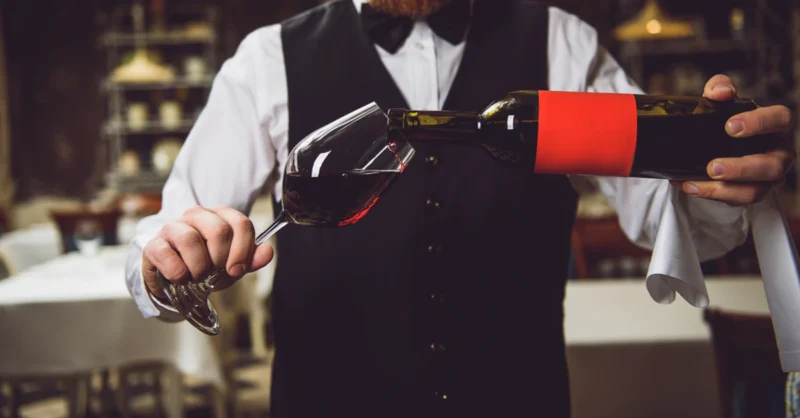
Here are some tips for serving wine:
- Wine tastes best when it is slightly cool. Red wine is best at 53 °F – 69 °F (light red wines like Pinot Noir taste better at the cooler end of the spectrum). Conversely, White Wine’s range is 53 °F – 69 °F (light red wines like Pinot Noir taste better at the cooler end of the spectrum. Sparkling wine fares best at these temperatures: 38 °F – 45 °F.
- A whole bottle of wine is portioned into servings. The ratio is 5 oz/150 ml. Don’t overfill the glass so that there is space for the aroma of the wine to spread. The aroma is part of the experience.
- Hold your wine glass by its stem. If you hold it in your hands, the wine will heat up because of your temperature.
How long does wine last?
It depends on the type of wine.
- White wine – 1-2 years after the printed expiration date
- Red wine – 2-3 years after its printed expiration date
- Cooking wine – 3-5 years after its printed expiration date
- Fine wine – If appropriately stored in a wine cellar, fine wine expires after 20-30 years
To preserve your wine, you should store it in a cool and dark place with the bottles placed on their sides to prevent the cork from drying out. It should be kept tightly sealed in the refrigerator when storing opened wine. Non-sparkling wine, ideally, should be decanted before it is stored away.
Benefits of wine (in moderation!)
Wine is one of the most incredible gastrointestinal experiences and has become a regular when celebrating the ups of your life. In addition to it being a social staple, wine can keep your heart healthy and contains antioxidants that fight off aging. One such community doing this is Storylines, a luxury residential ship of global citizens who live to travel, enjoying the finer things in life while still focusing on wellness and longevity.
As your knowledge and appreciation of wine develop, you can start pairing wine with the right food. And you will find one complements the other. Amazing, right? There is a whole world of wine you have yet to discover. Literally, from South Australia to the south of France, wine enthusiasts travel the world exploring the wines by region.



